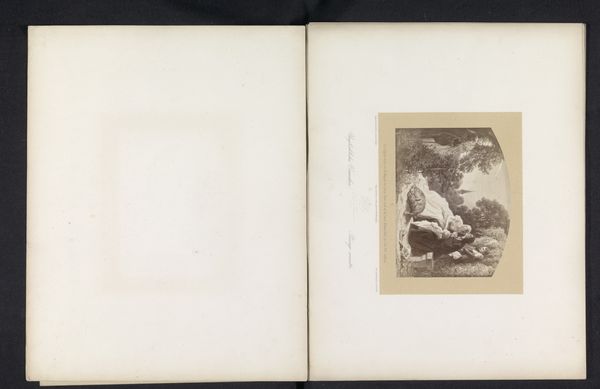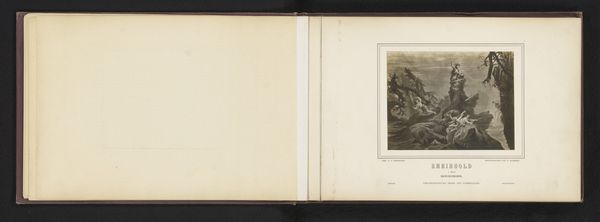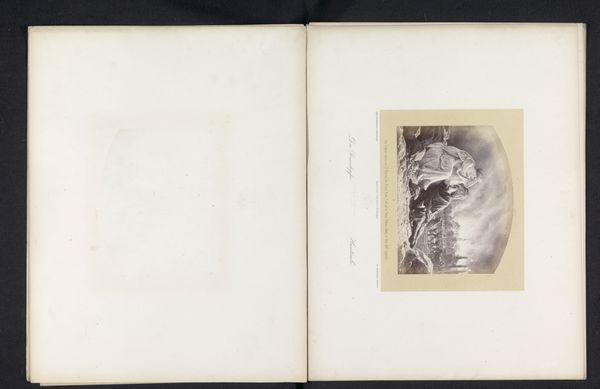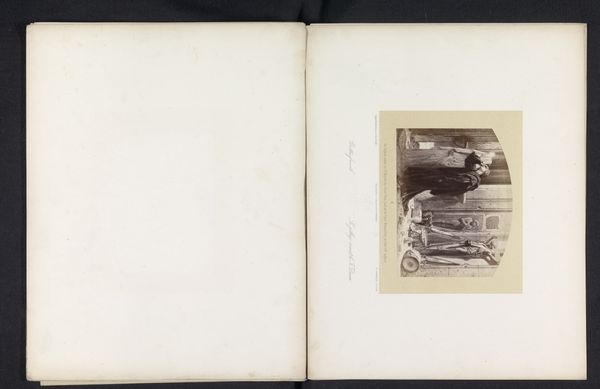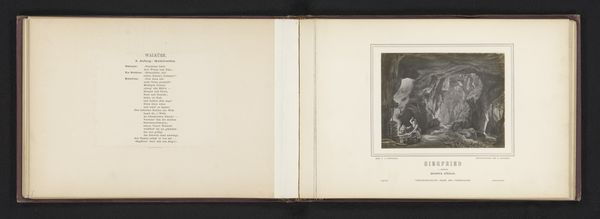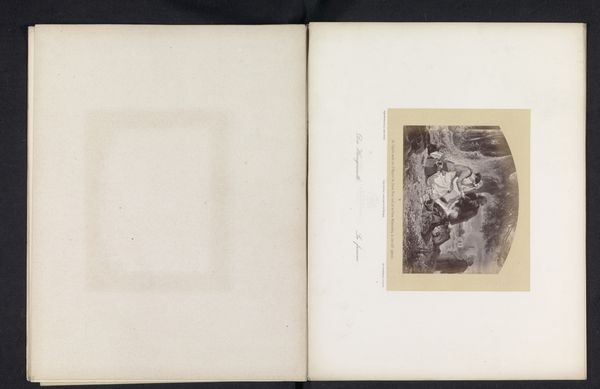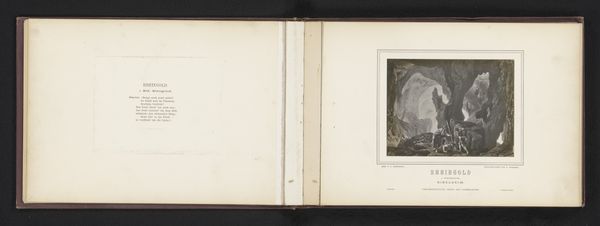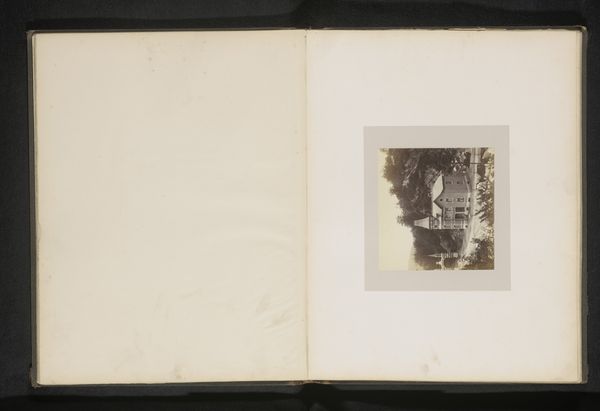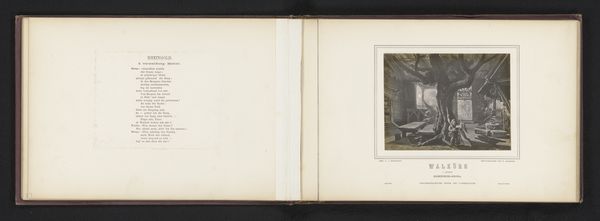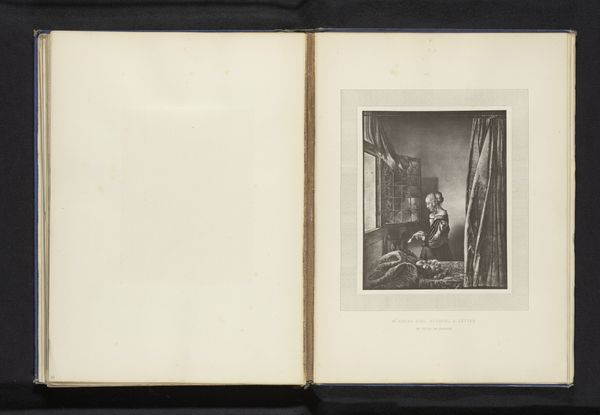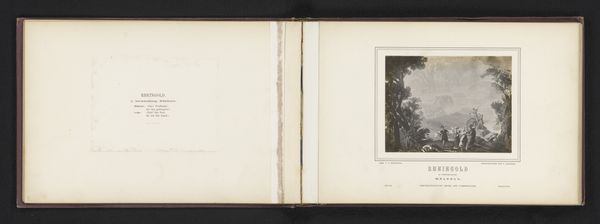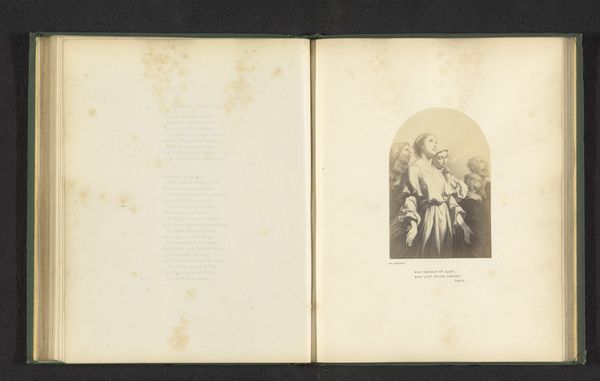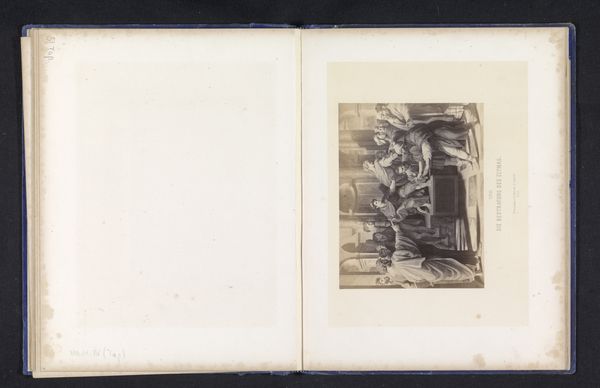
Fotoreproductie van een tekening van vermoedelijk een engel en een man die op een slagveld het handelen van andere mensen bekijkt before 1868
0:00
0:00
Dimensions: height 115 mm, width 148 mm
Copyright: Rijks Museum: Open Domain
Editor: So this is a reproduction of a drawing; the record suggests it depicts an angel and a man on a battlefield. It was made before 1868, and the artist is Ludwig Angerer. It feels rather sombre to me. I am curious: what do you make of it? Curator: Seeing this image through a contemporary lens, I’m drawn to the power dynamics at play, and who is granted the power to witness. An angel overseeing the theatre of war raises questions about divine sanctioning of violence, and the romanticism around conflict so prevalent in historical narratives. Who gets to tell the story? Whose suffering is valorized, and whose is erased? Consider the social contexts of mid-19th century Europe. Does this image reinforce dominant ideologies? Editor: I hadn’t thought about it in terms of power before, but now that you mention it, there is a sense of distance from the actual battle. As if they're not involved, just… watching. Is that a common theme? Curator: Absolutely. Art often reflects and reinforces the social hierarchies of its time. Consider who commissions these works and their intended audience. The detached observer position in this image grants a certain authority. Exploring whose perspectives are centered, and whose are marginalized, is a critical step to uncovering an artwork's potential ideological underpinnings. How might this scene be different if depicted from the perspective of a soldier on the ground, or a grieving family member? Editor: That really shifts my perspective. Thinking about whose story isn't being told adds a whole new layer. Curator: Exactly. It allows us to challenge conventional interpretations and engage in a more nuanced understanding of the artwork's role within its historical and contemporary contexts. It's about prompting critical conversations. Editor: This has been a really helpful reframing; I am certainly thinking about whose voices are silent now. Curator: Indeed. Recognizing these silences allows us to actively seek out marginalized perspectives and broaden our understanding of history and art.
Comments
No comments
Be the first to comment and join the conversation on the ultimate creative platform.
